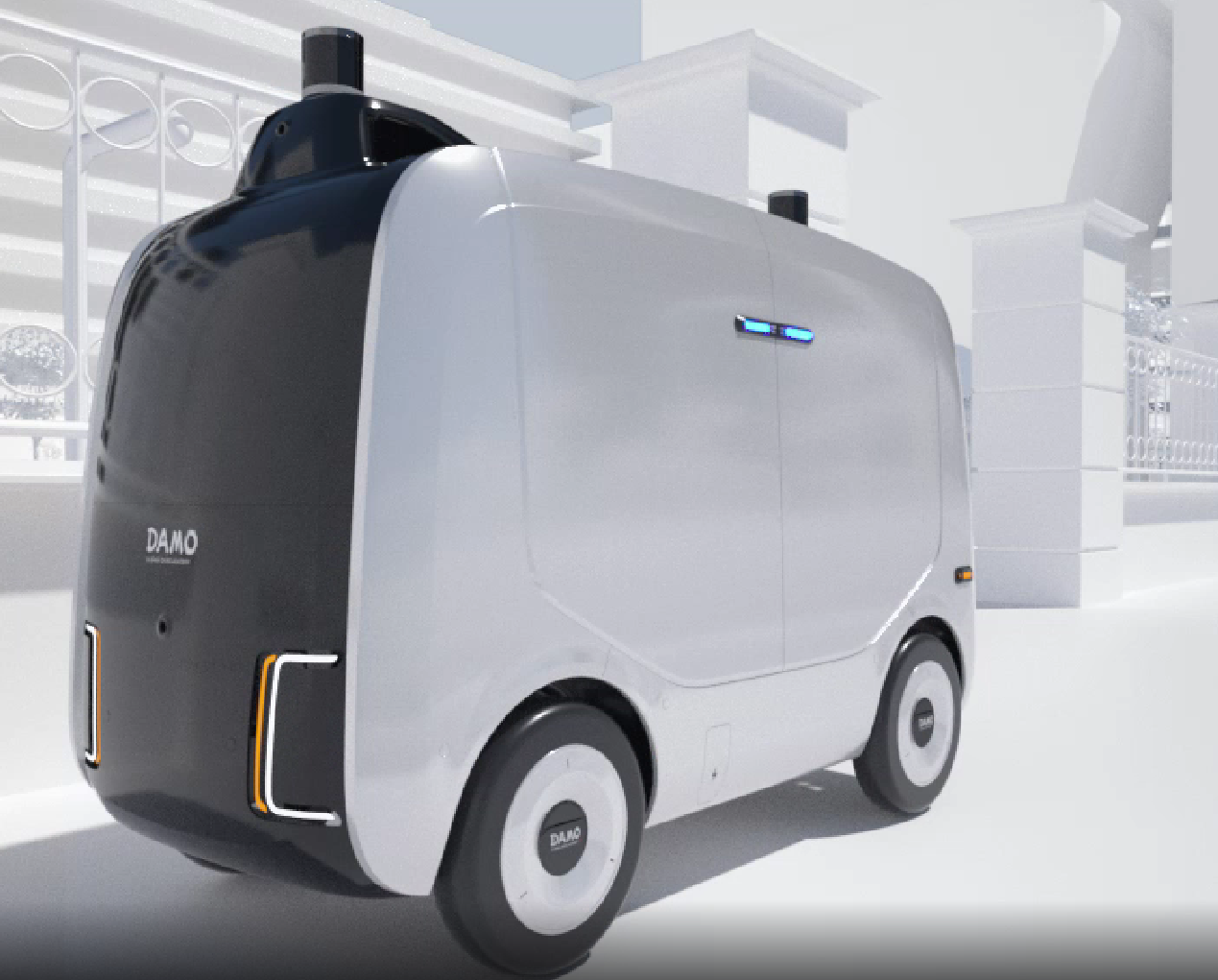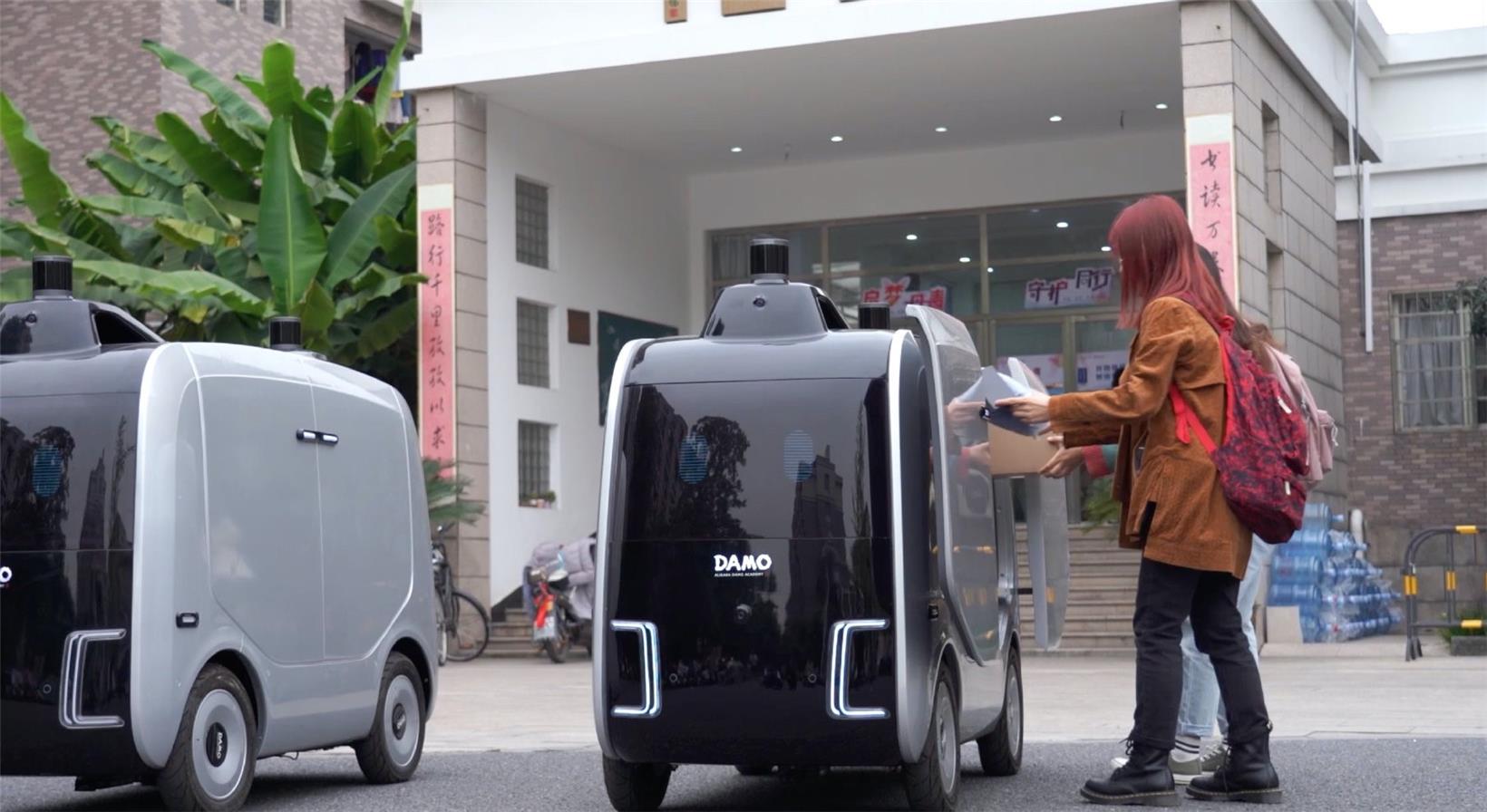Alibaba: terminal delivery is the optimal autonomous driving scenario
Beijing (Gasgoo)- As a latecomer in the autonomous driving field, China's e-commerce mogul, Alibaba Group, has achieved impressive results through its Xiao Man Lv (meaning little robust donkey in English) last-mile delivery robot.

Xiao Man Lv; photo credit: Alibaba
In 2017, Alibaba founded its Damo Academy and set up various research laboratories for different advanced technologies, including autonomous driving. One year later, one of the most achieving scientists inside Alibaba Group, Wang Gang, volunteered and was welcomed to lead the autonomous driving lab.

However, to the team's surprise, Wang Gang was determined to use autonomous driving solutions to solve the last-mile logistic dilemma and made it the team's primary goal.
As time went by, the team was gradually convinced that logistics is the optimal scenario to commercialize autonomous driving technologies on a large scale and started digging.
After two years of optimizing software algorithms and fulfilling hardware developments, the team was able to launch the first fruit of its work, the Xiao Man Lv, at Alibaba's Apsara Conference in 2020, followed by the establishment of the Xiao Man Lv Intelligent Technology Co., Ltd.
The founding of the independent company showed Alibaba's determination in developing autonomous driving technologies to the public.Wang Gang believes that autonomous driving should be something tangible and grounded. Under the optimal condition, the technology requires a virtuous cycle to mature and improve. It can only improve with data collected from real-life applications, and the data will then feed technology upgrades for launching new products.

Xiao Man Lv; photo credit: Alibaba
With China's e-commerce industry growing stronger and faster, robots and automation technologies are incorporated in almost the entire process of the logistics service, from loading to unloading, package sorting to distribution. However, the first and last mile when picking up and delivering the package still require manual labor, remaining a blind spot for automation to reach.
Dean of the Damo Academy, Zhang Jianfeng, said that end-to-end delivery costs the most and provides the least within the entire express logistics system.
"Currently, there are roughly 4,000 to 5,000 universities, 300,000 large-scale neighborhoods, and 100,000 parks in China, generating massive delivery orders with massive costs every day", Wang Gang pointed out.

University student picking up package; photo credit: Alibaba
That is why university campuses were the first choice for the team to test out the Xiao Man Lv. During last year's "11.11" (Black Friday equivalent), 22 units of the Xiao Man Lv delivered 50,000 packages across the 27 dorm buildings on the Zhejiang University campus, saving nearly 17,000 hours of picking-up packages for students and faculty on-site.
The team is pushing the same kind of application to more campuses and neighborhoods.
Wang Gang disclosed their 3-year-plan that the Xiao Man Lv fleet would be enlarged to 10,000 vehicles, with a daily averaged package delivery volume of 1 million units. Moreover, the Xiao Man Lv base technologies will also be transferred to the team's next big thing, the Da Man Lv (meaning the big robust donkey in English) autonomous light trucks.
The team is very optimistic about the Da Man Lv project and expects to deploy the trucks on 10,000 urban freight routes three years from now.
Compared to the Xiao Man Lv, autonomous trucks require much more effort and technology. Wang Gang said that the company's previously acquired experience, technologies, and data when developing the Xiao Man Lv laid the foundation for its driverless light truck endeavor, like the closed-loop mentioned before. The truck will be powered by the same existing L4 architecture, machine learning platform, cloud-based intelligent simulation testing platform, embedded computing unit, and customized sensor technologies from the Xiao Man Lv.
As of now, the Xiao Man Lv was deployed onto tens of university campuses in 22 provinces in China. Moreover, the team is very optimistic about the Da Man Lv project. Per its estimation, the Damo autonomous driving lab will deploy the trucks on 10,000 urban freight routes three years from now.
Gasgoo not only offers timely news and profound insight about China auto industry, but also help with business connection and expansion for suppliers and purchasers via multiple channels and methods. Buyer service:buyer-support@gasgoo.comSeller Service:seller-support@gasgoo.com







